Real-time tracking of virus evolution
Trevor Bedford (@trvrb)
4 Aug 2017
SURP Seminar
Fred Hutch
We work at the interface of virology, evolution and epidemiology

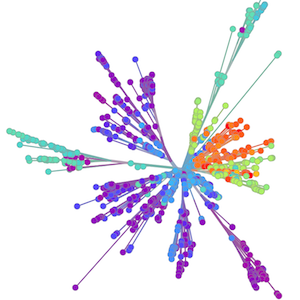
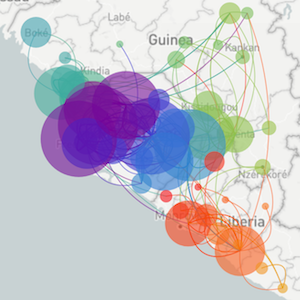

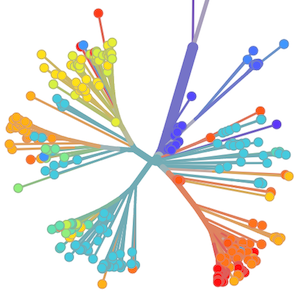
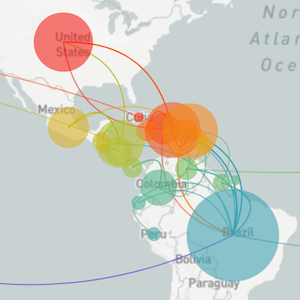
Segue through data vizualization
Data tells a story
Charles Minard and Napoleon's 1812 campaign
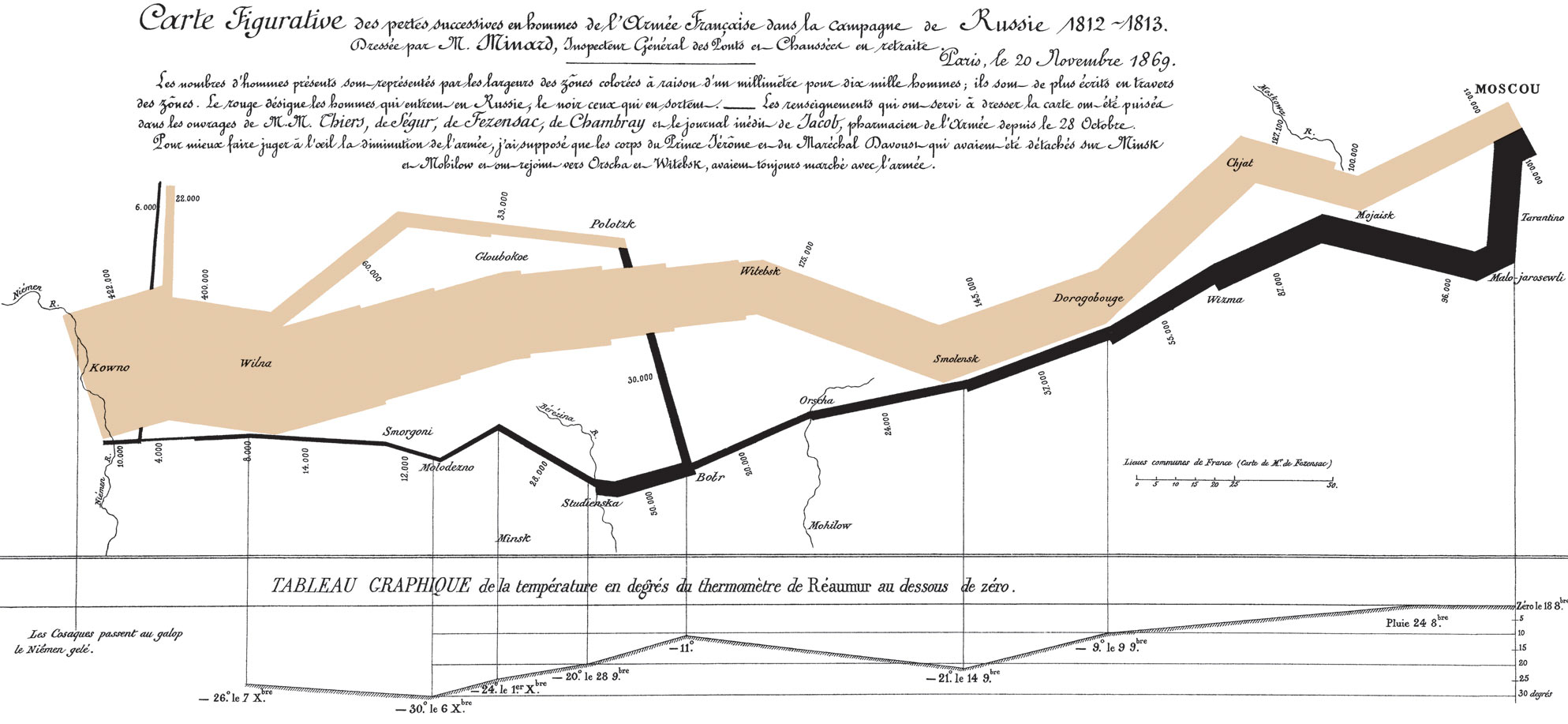
If data are looked at in the right way, answers become immediately clear
Edward Tufte




Above all, show the data
A good graphic is honestBarchart of average value

Box-and-whisker plot showing variation

Showing the data

To clarify add detail
"To clarify, add detail... Clutter and overload are not attributes of information, they are failures of design. If the information is in chaos, don’t start throwing out information, instead fix the design."– Tufte
Evolution of Conus shells

Greenland rising

Small multiples and dimensionality

Mapping infection spread
John Snow and the founding of epidemiologyGlobal pandemic spread

Geographic distance does not describe pandemic spread

Shortest network path captures pandemic spread

My research
Methods focus on sequencing to reconstruct pathogen spread
Epidemic process

Sample some individuals

Sequence and determine phylogeny
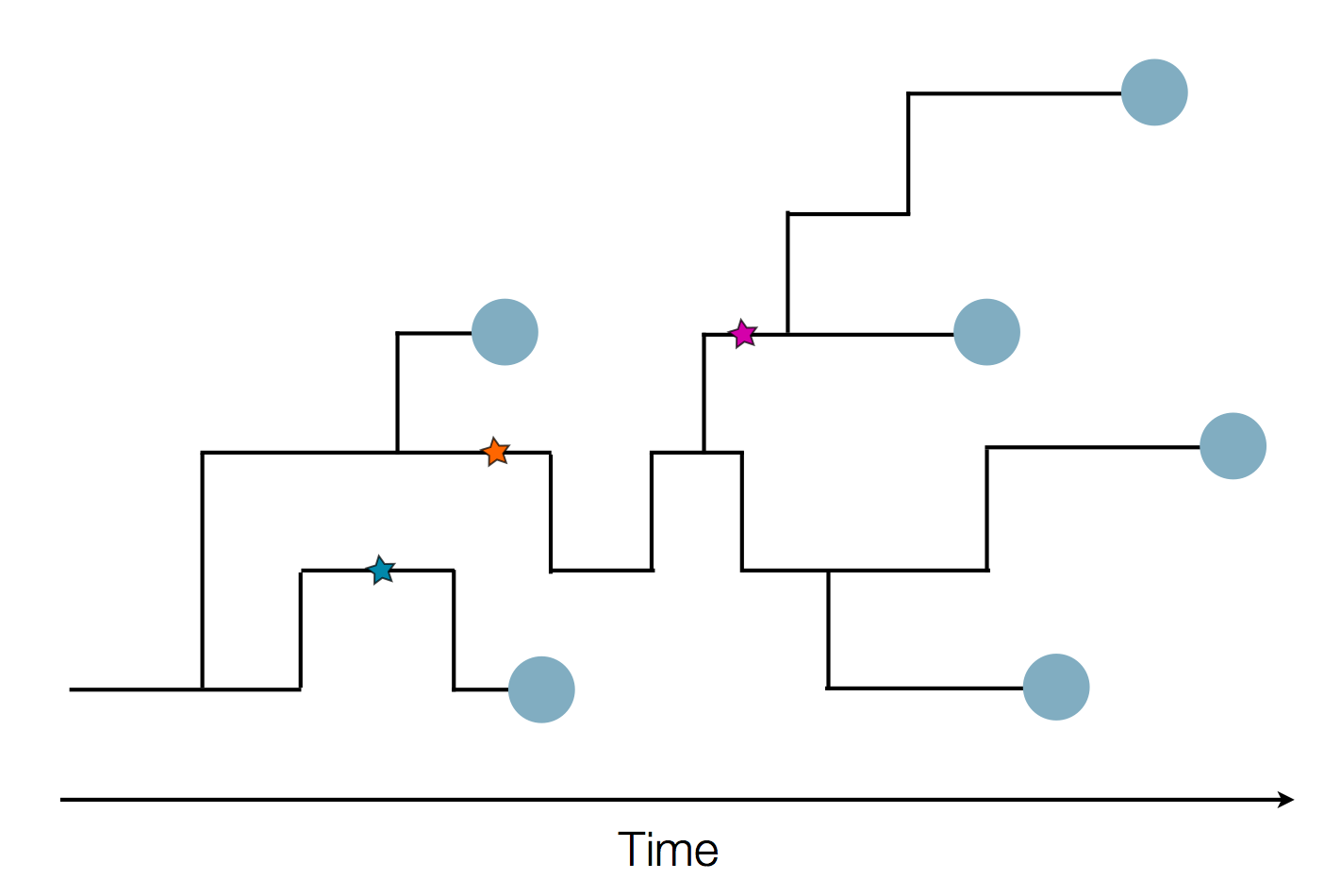
Sequence and determine phylogeny

Localized Middle Eastern MERS-CoV phylogeny
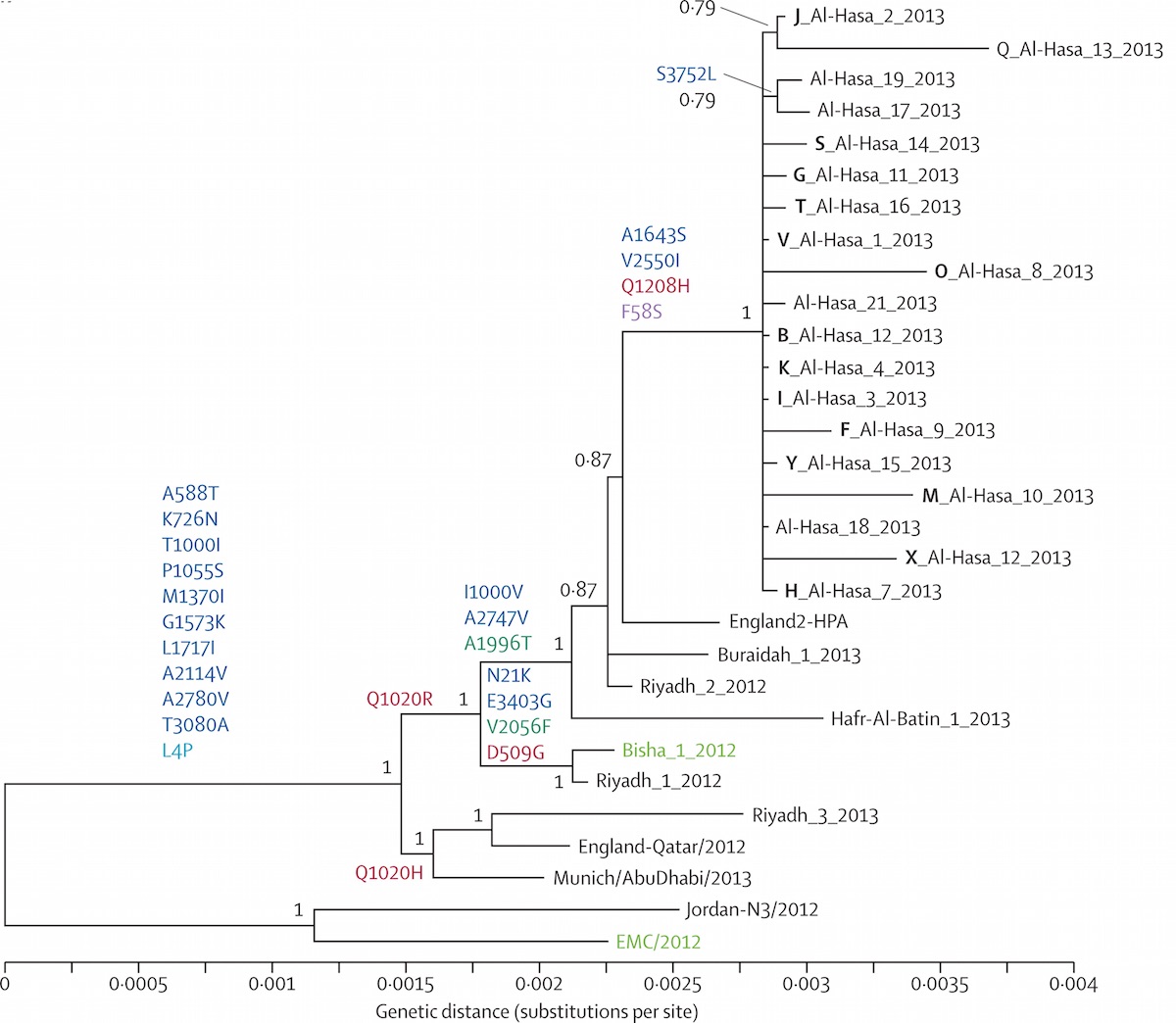
Regional West African Ebola phylogeny
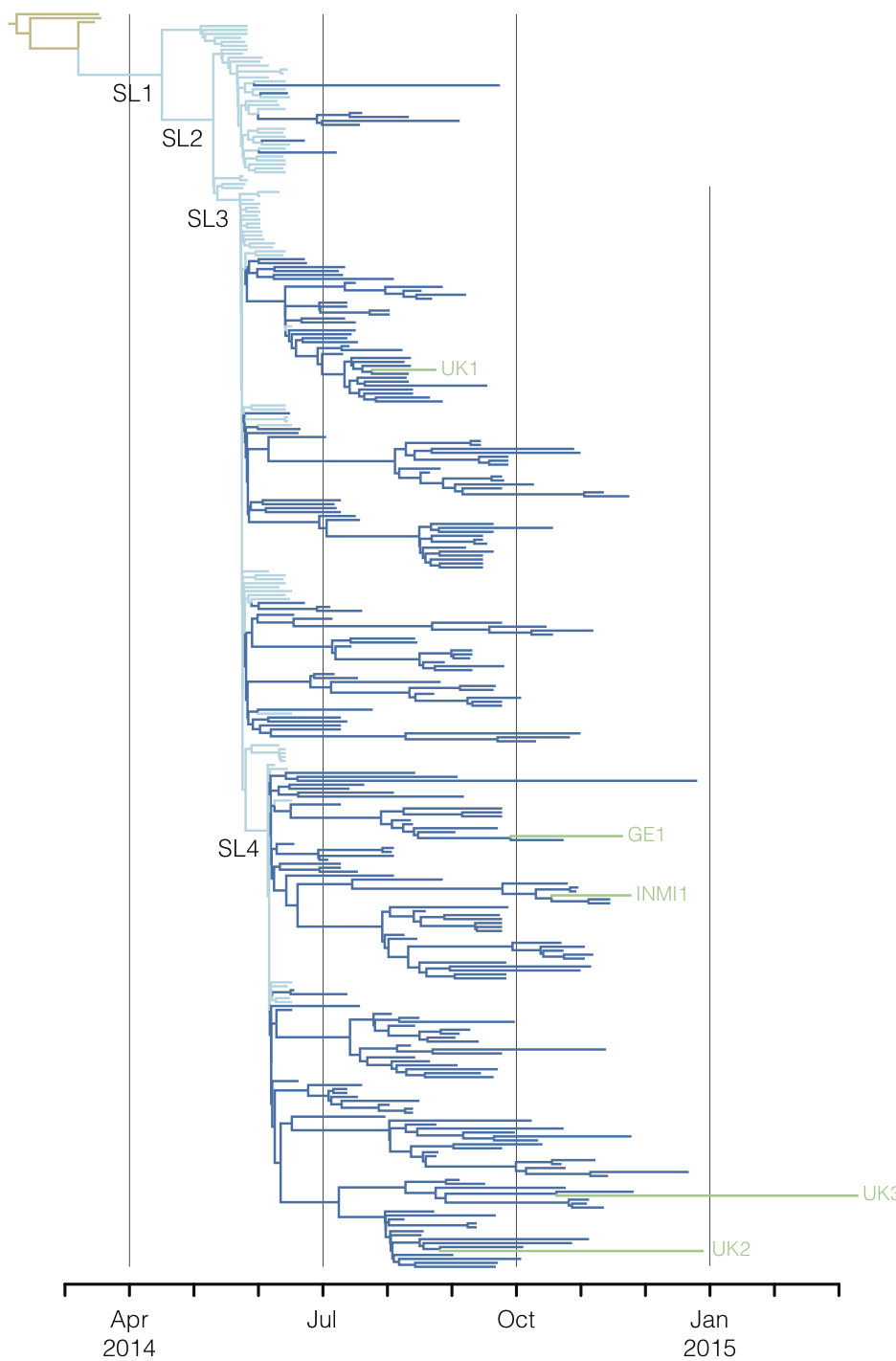
Global influenza phylogeny
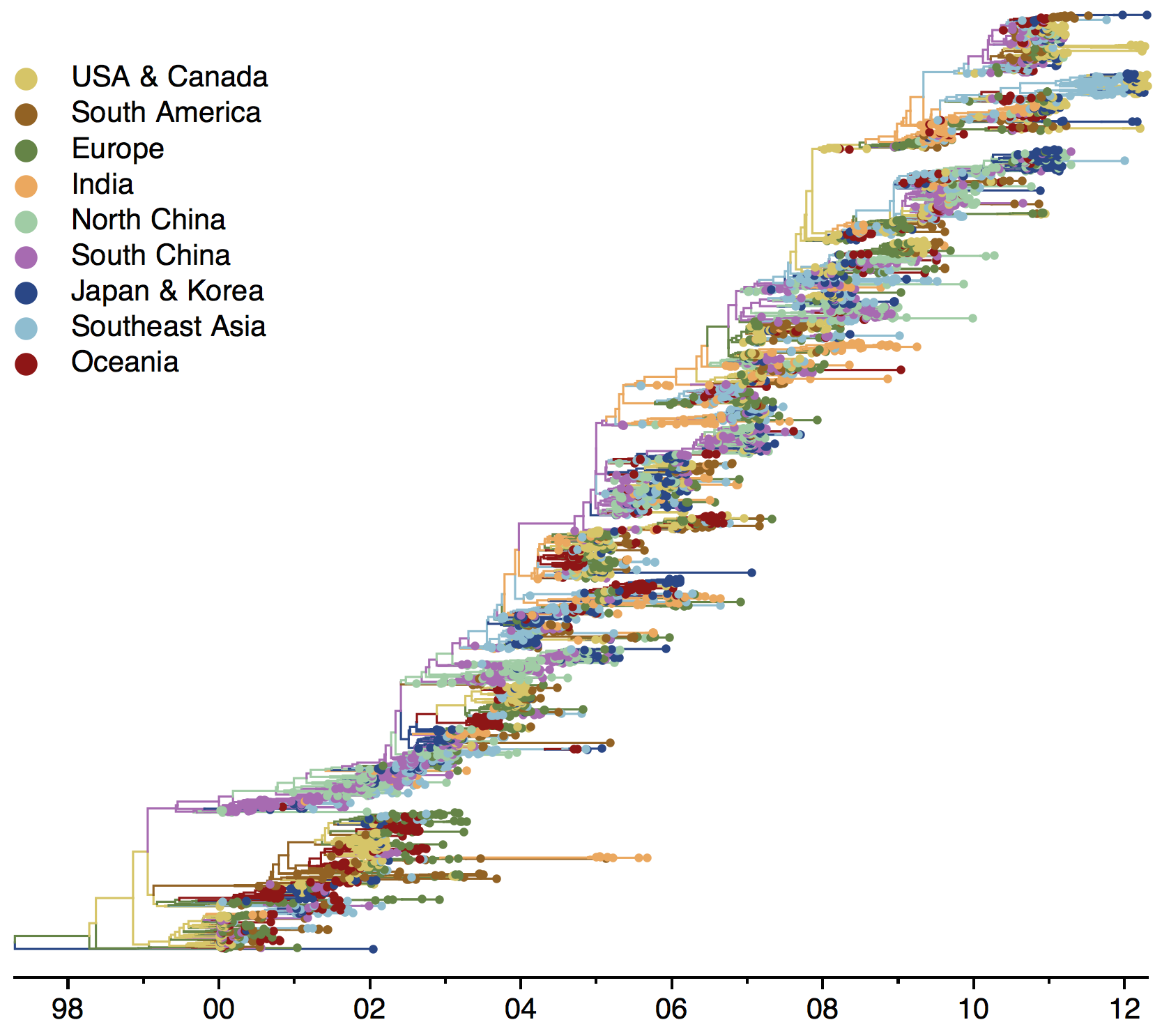
Phylogenetic tracking has the capacity to revolutionize epidemiology
Outline
- Influenza evolution
- Ebola spread in West Africa
- Zika spread in the Americas
- "Real-time" analyses
Influenza
Dynamics driven by antigenic drift
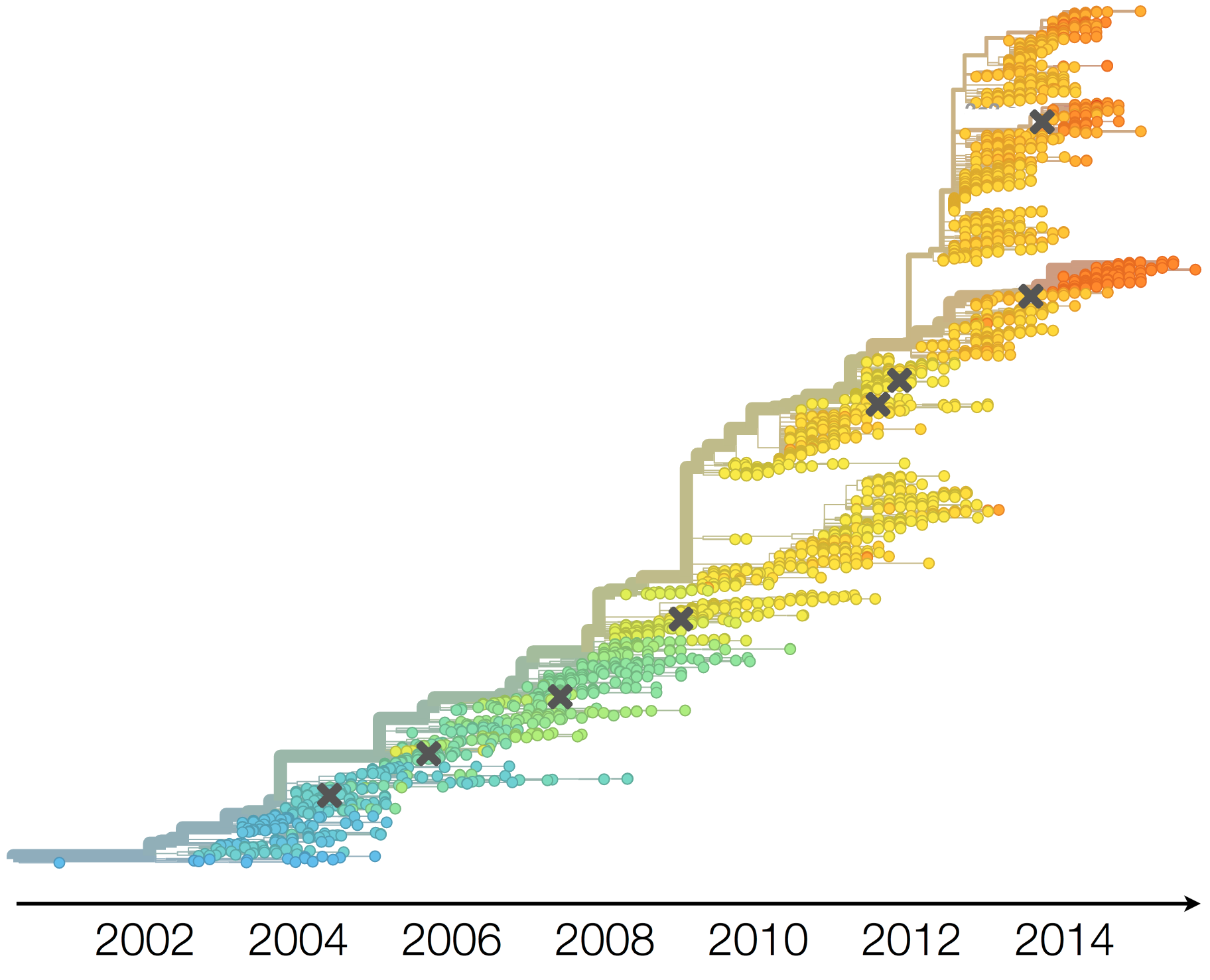
Drift variants emerge and rapidly take over in the virus population
This causes the side effect of evading existing vaccine formulations
Drift necessitates vaccine updates

We're trying to forecast which strains will take over in the coming year and inform vaccine strain selection
Ebola
Virus genomes reveal factors that spread and sustained the Ebola epidemic
with ![]() Gytis Dudas, Andrew Rambaut, Luiz Carvalho, Marc Suchard, Philippe Lemey,
Gytis Dudas, Andrew Rambaut, Luiz Carvalho, Marc Suchard, Philippe Lemey,
and many others
Sequencing of 1610 Ebola virus genomes collected during the 2013-2016 West African epidemic

Phylogenetic reconstruction of evolution and spread

Initial emergence from Guéckédou

Tracking migration events

Factors influencing migration rates
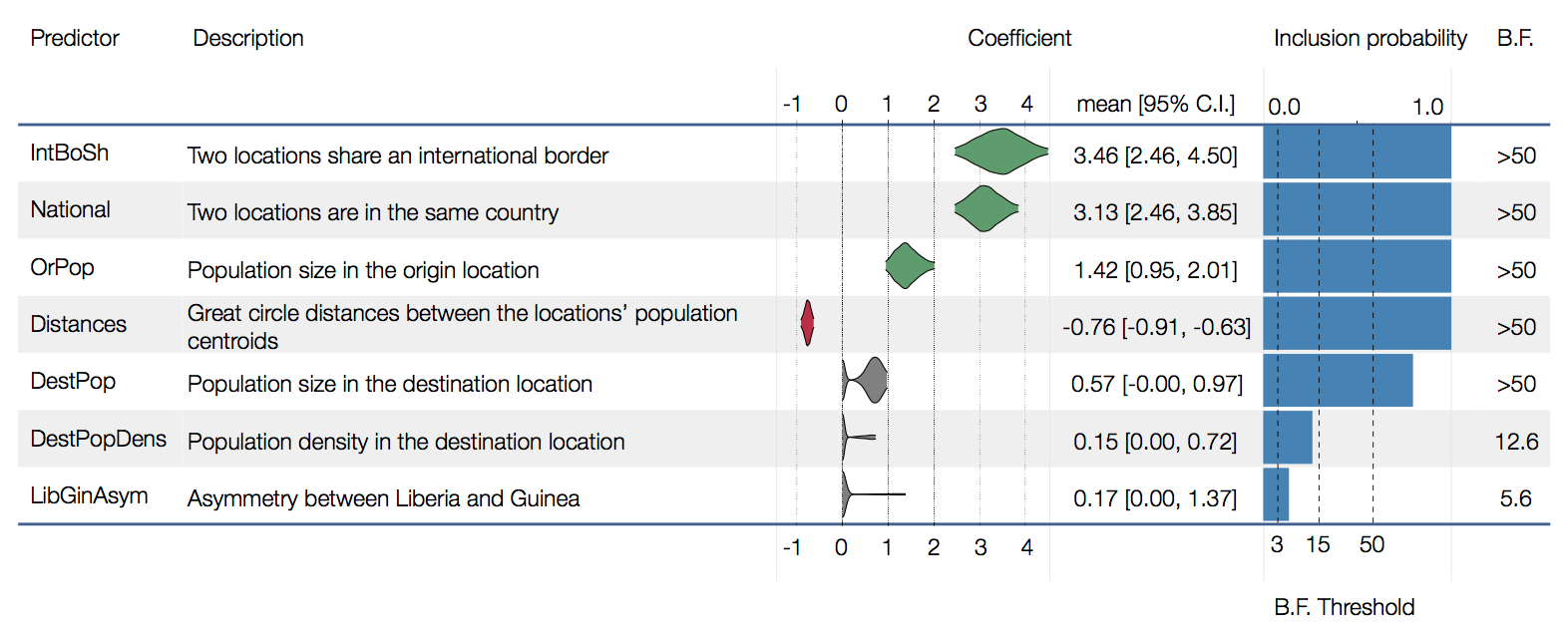
Effect of borders on migration rates

Spatial structure at the country level
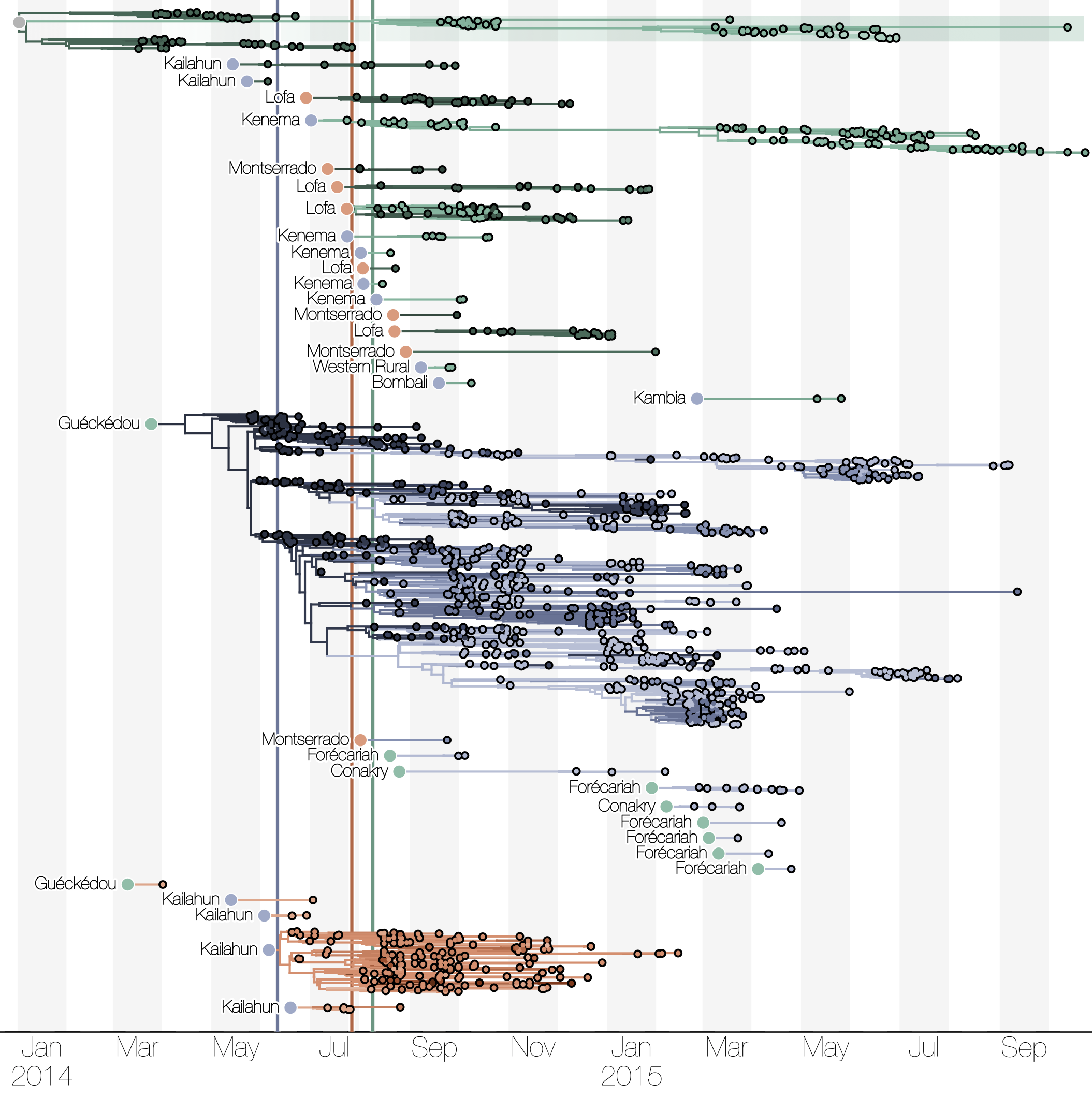
Substantial mixing at the regional level
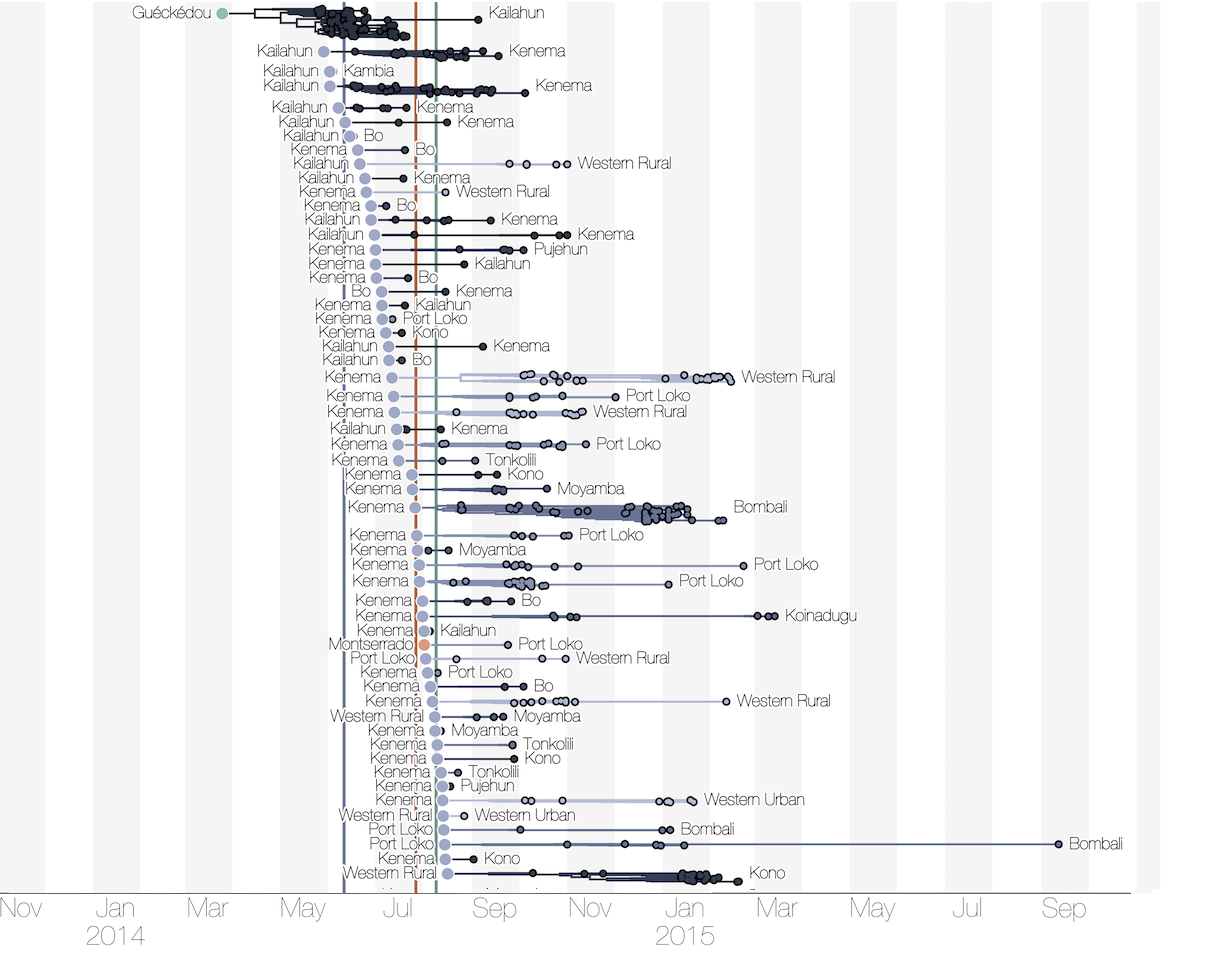
Regional outbreaks due to multiple introductions
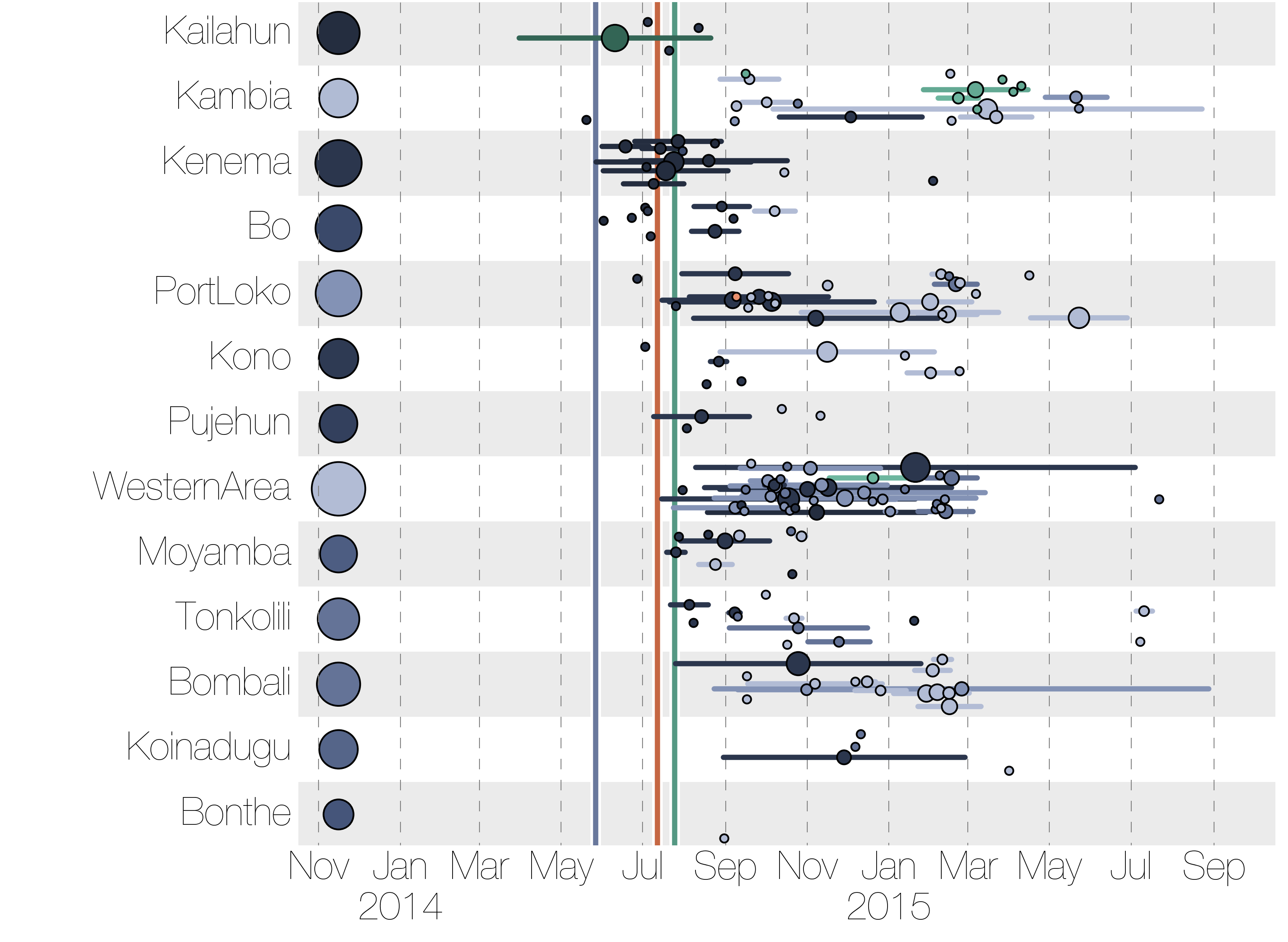
Ebola spread in West Africa followed a gravity model with moderate slowing by international borders, in which spread is driven by short-lived migratory clusters
Zika
Zika's arrival and spread in the Americas

Establishment and cryptic transmission of Zika virus in Brazil and the Americas
with Nuno Faria, Nick Loman, Oli Pybus, Luiz Alcantara, Ester Sabino, Josh Quick,
![]() Alli Black,
Ingra Morales, Julien Thézé, Marcio Nunes, Jacqueline de Jesus,
Alli Black,
Ingra Morales, Julien Thézé, Marcio Nunes, Jacqueline de Jesus,
Marta Giovanetti, Moritz Kraemer, Sarah Hill and many others
Road trip through northeast Brazil to collect samples and sequence

Case reports and diagnostics suggest initiation in northeast Brazil
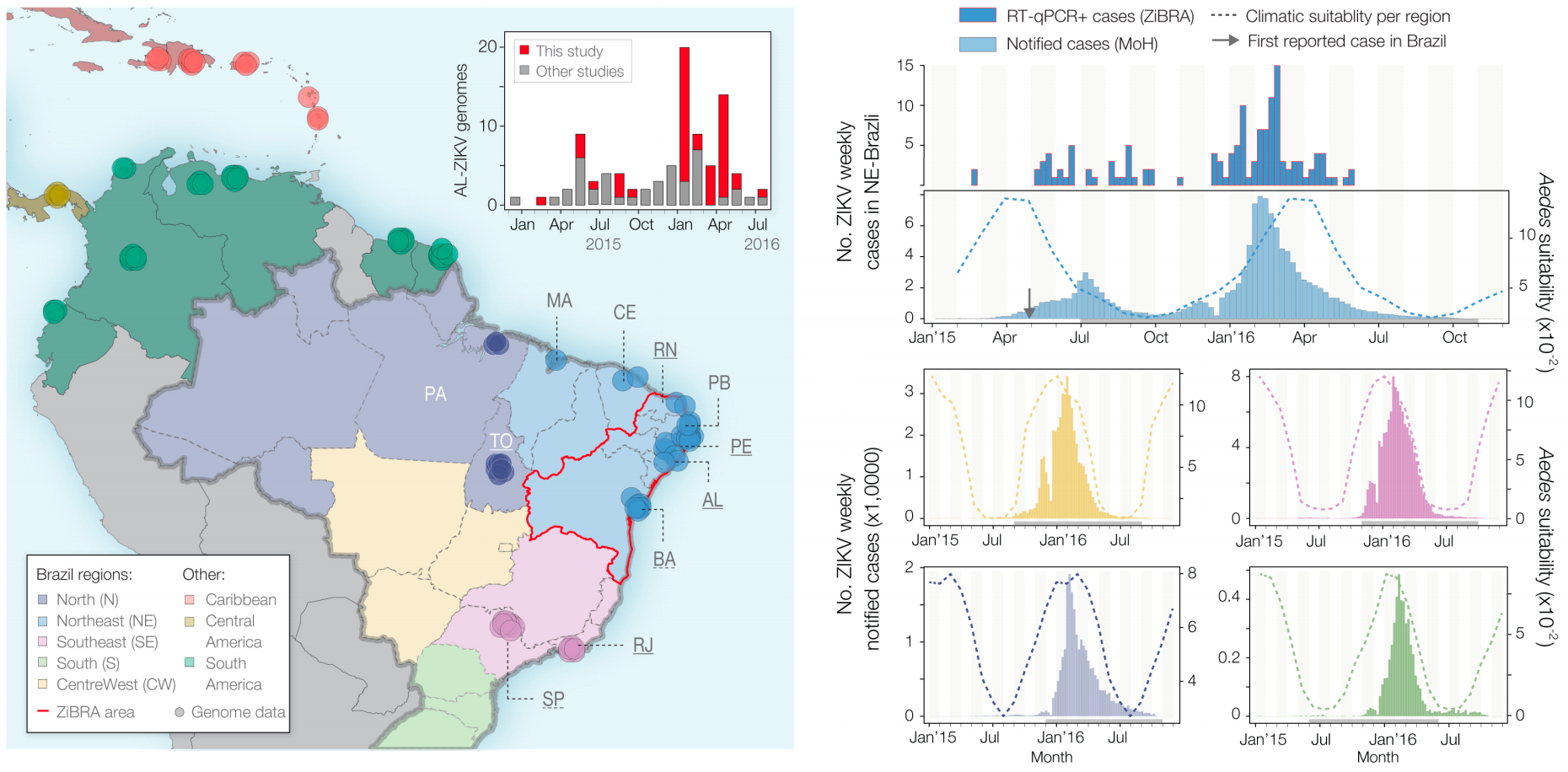
Phylogeny infers an origin in northeast Brazil
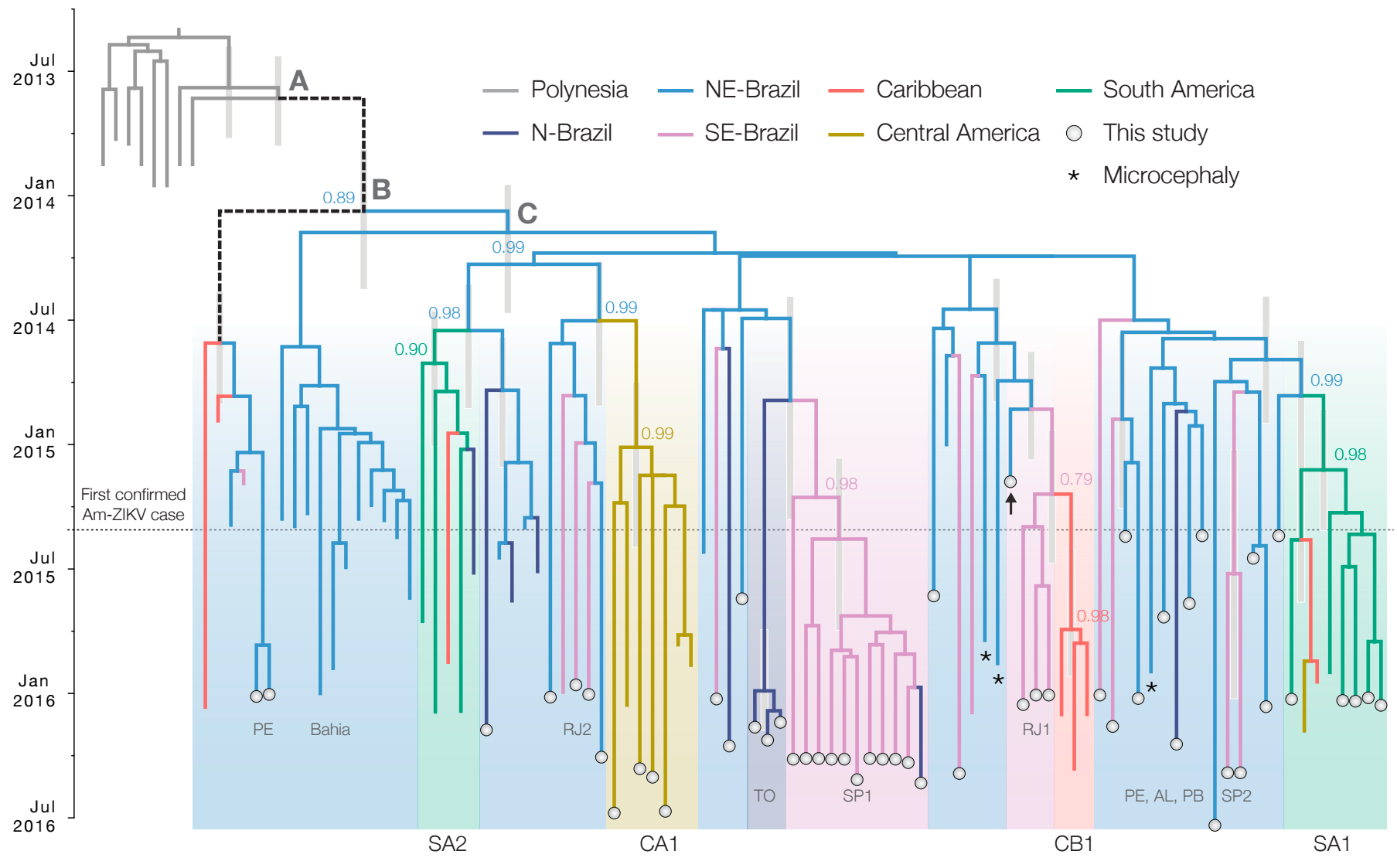
Genomic epidemiology reveals multiple introductions of Zika virus into the United States
with Nathan Grubaugh, Kristian Andersen, Jason Ladner, Gustavo Palacios, Sharon Isern, Oli Pybus,
Moritz Kraemer, ![]() Gytis Dudas,
Amanda Tan, Karthik Gangavarapu, Michael Wiley, Stephen White,
Julien Thézé, Scott Michael, Leah Gillis, Pardis Sabeti, and many others
Gytis Dudas,
Amanda Tan, Karthik Gangavarapu, Michael Wiley, Stephen White,
Julien Thézé, Scott Michael, Leah Gillis, Pardis Sabeti, and many others
Outbreak of locally-acquired infections focused in Miami-Dade county
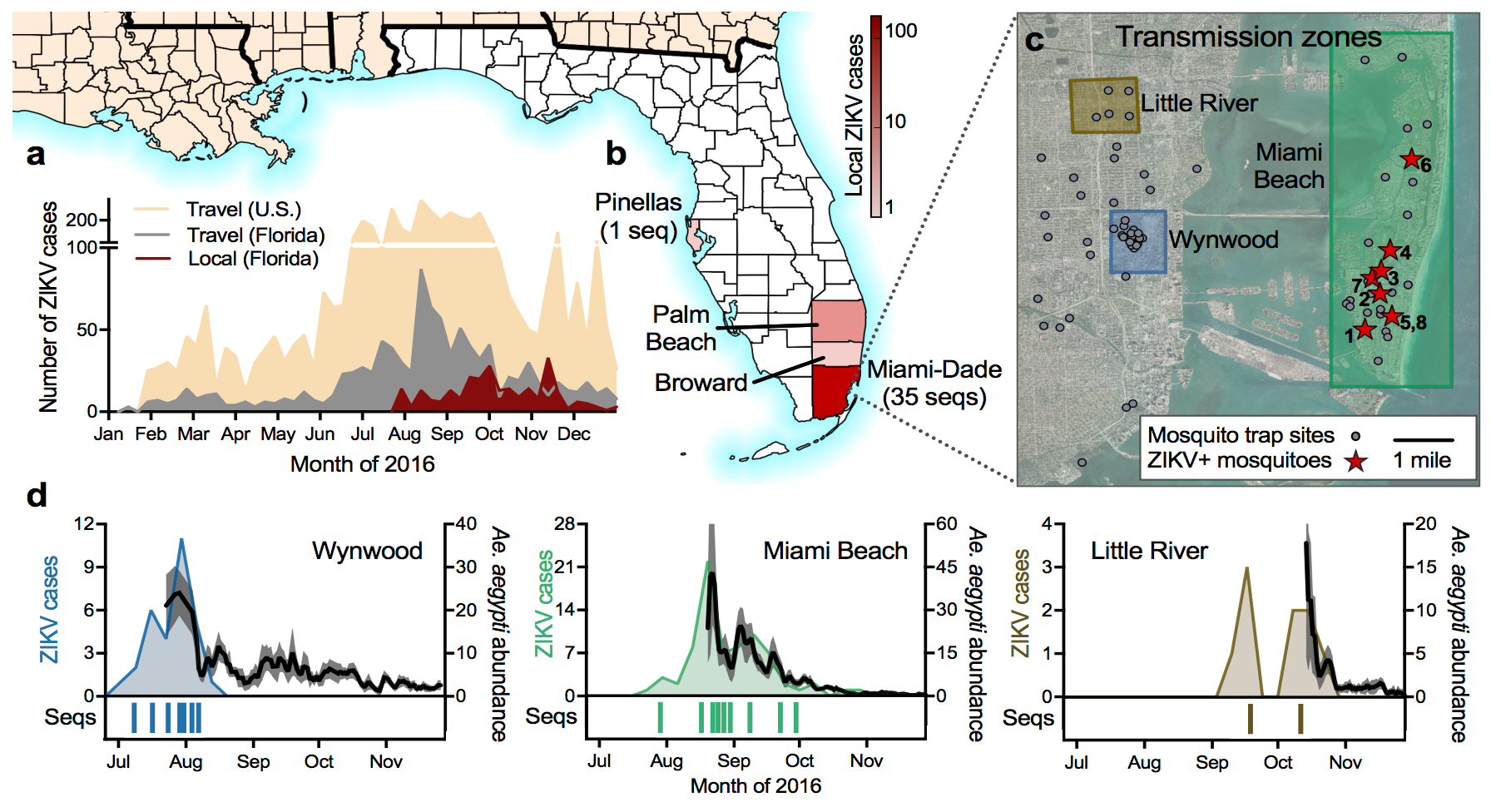
Phylogeny shows introductions from the Caribbean and a surprising degree of clustering
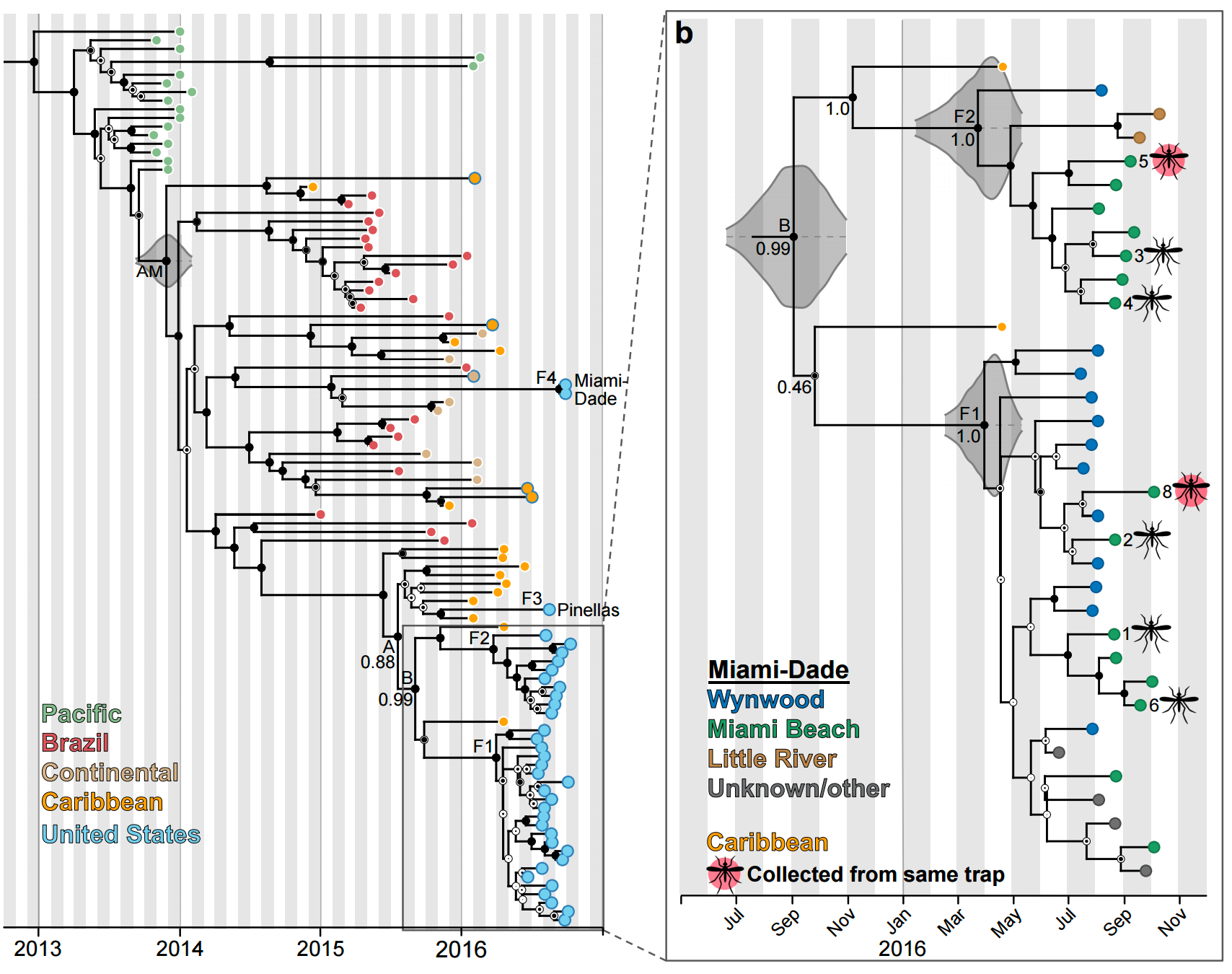
Flow of infected travelers greatest from Caribbean
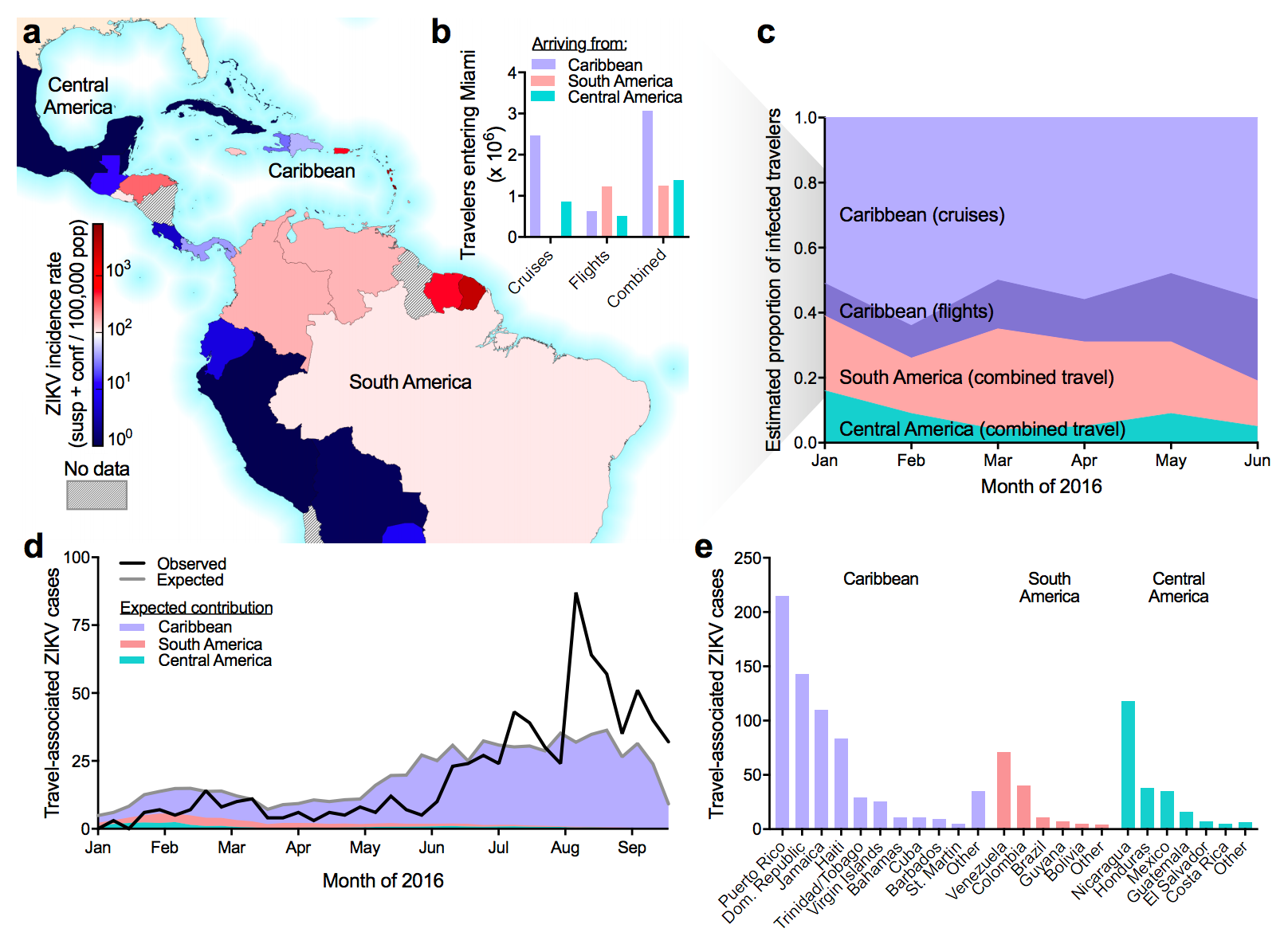
Clustering suggests fewer, longer transmission chains and higher R0
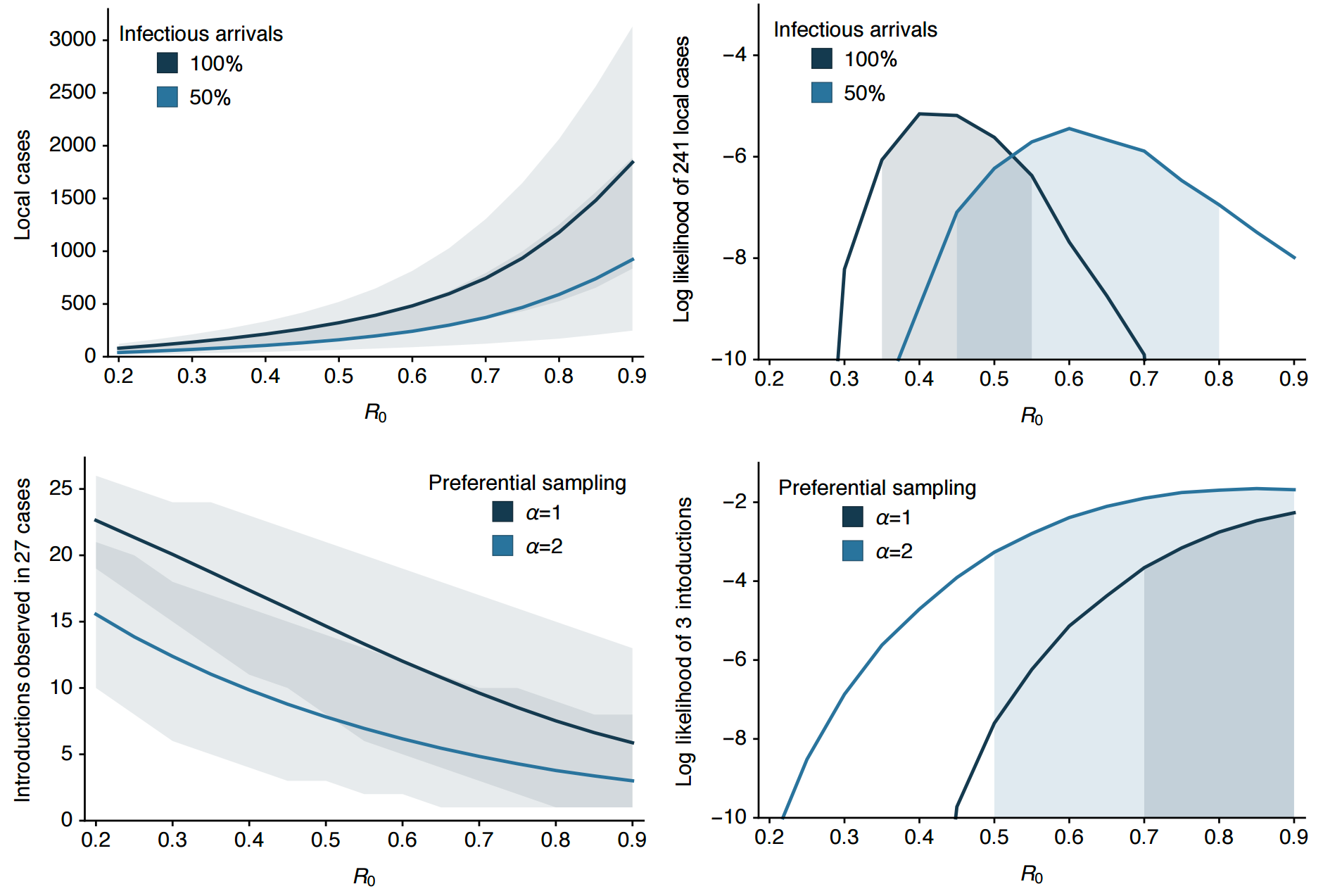
Genomic epidemiology of Zika in the US Virgin Islands
with ![]() Alli Black,
Alli Black,
![]() Barney Potter,
Barney Potter,
![]() Gytis Dudas,
Esther Ellis, Brett Ellis,
Gytis Dudas,
Esther Ellis, Brett Ellis,
Kristian Andersen, Nathan Grubaugh, Leora Feldstein, and others
(and special thanks to Adam Geballe)
Preliminary analysis of 31 genomes shows multiple introductions to USVI
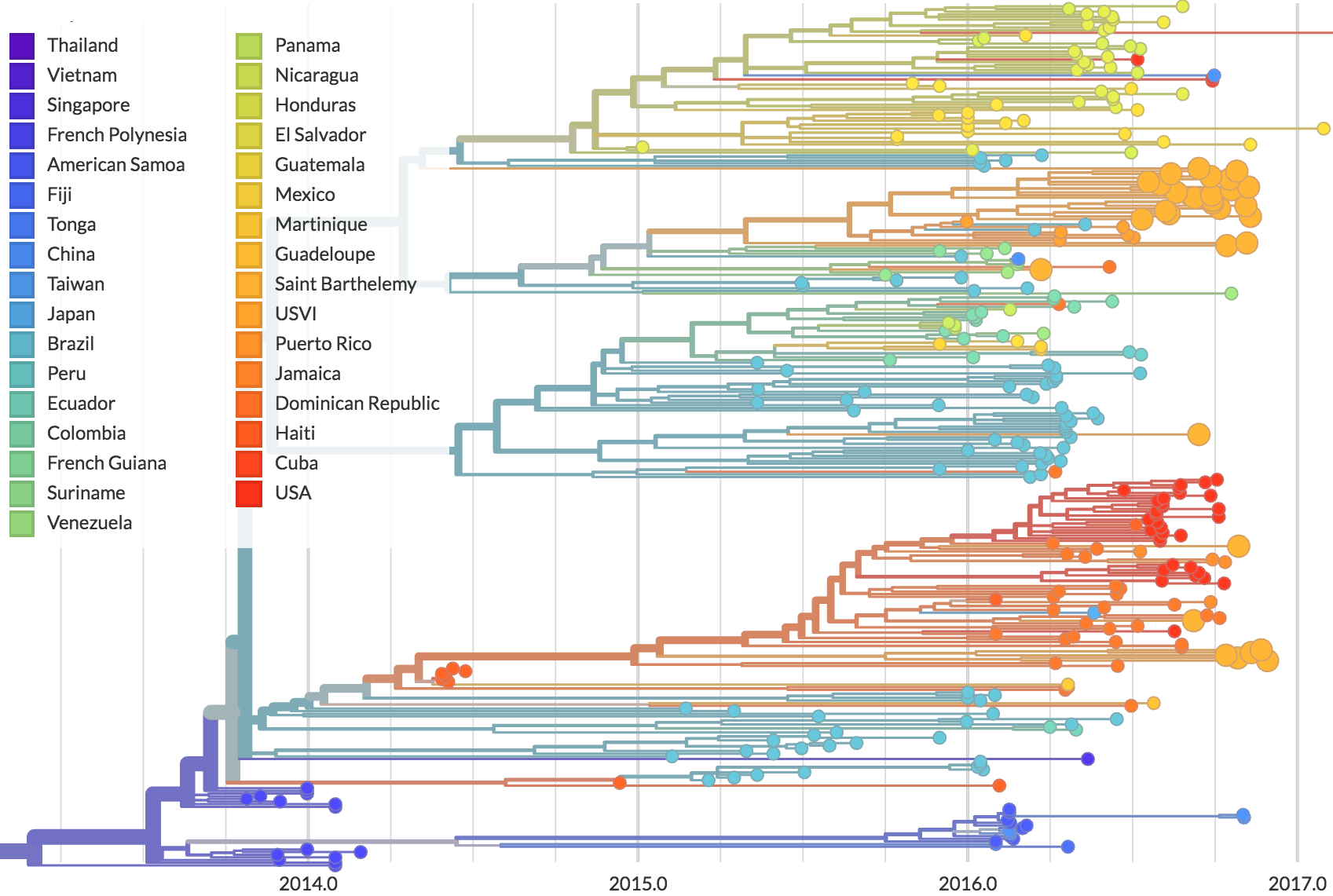
Important analyses, let's make them more rapid and more automated
Key challenges
- Timely analysis and sharing of results critical
- Dissemination must be scalable
- Integrate many data sources
- Results must be easily interpretable and queryable
nextstrain
Project to conduct real-time molecular epidemiology and evolutionary analysis of emerging epidemics
with
![]() Richard Neher,
Richard Neher,
![]() James Hadfield,
James Hadfield,
![]() Colin Megill,
Colin Megill,
![]() Sidney Bell,
Sidney Bell,
![]() Charlton Callender,
Charlton Callender,
![]() Barney Potter,
Barney Potter,
and ![]() John Huddleston
John Huddleston
Nextstrain architecture
All code open source at github.com/nextstrain

nextstrain.org
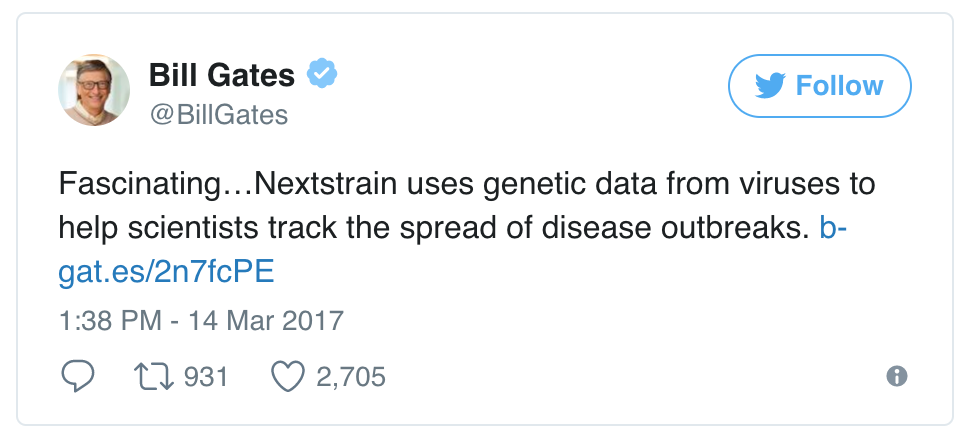
Rapid on-the-ground sequencing by Ian Goodfellow, Matt Cotten and colleagues
Desired analytics are pathogen specific and tied to response measures
Acknowledgements
Bedford Lab:
![]() Alli Black,
Alli Black,
![]() Sidney Bell,
Sidney Bell,
![]() Gytis Dudas,
Gytis Dudas,
![]() Stephanie Stacy,
Stephanie Stacy,
![]() John Huddleston,
John Huddleston,
![]() Barney Potter,
Barney Potter,
![]() James Hadfield,
James Hadfield,
![]() Louise Moncla,
Louise Moncla,
![]() Maya Lewinsohn
Maya Lewinsohn
Influenza: WHO Global Influenza Surveillance Network, GISAID, Richard Neher, Colin Russell, Andrew Rambaut, Marc Suchard, Philippe Lemey, Steven Riley
Ebola: Gytis Dudas, Andrew Rambaut, Luiz Carvalho, Philippe Lemey, Marc Suchard, Andrew Tatem
Zika: Nick Loman, Nuno Faria, Oli Pybus, Josh Quick, Kristian Andersen, Nathan Grubaugh, Jason Ladner, Gustavo Palacios, Sharon Isern, Gytis Dudas, Alli Black, Barney Potter, Esther Ellis
Nextstrain: Richard Neher, James Hadfield, Colin Megill, Sidney Bell, Charlton Callender, Barney Potter, John Huddleston






